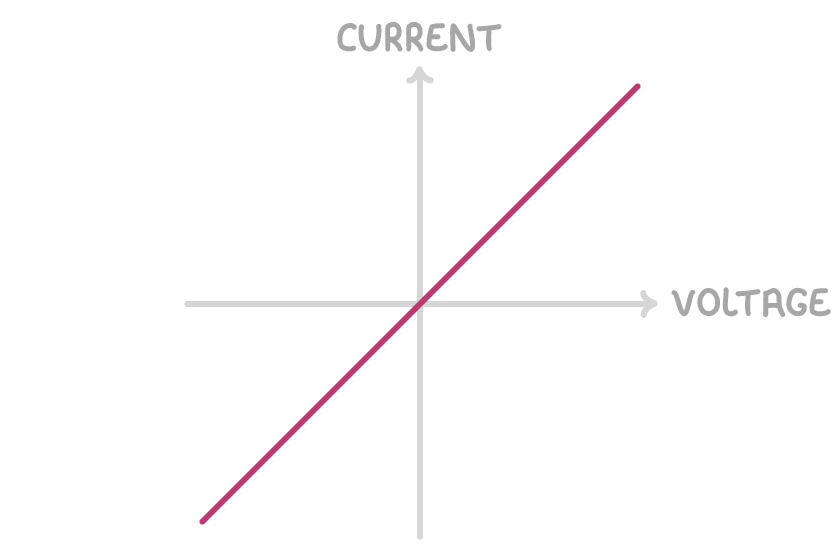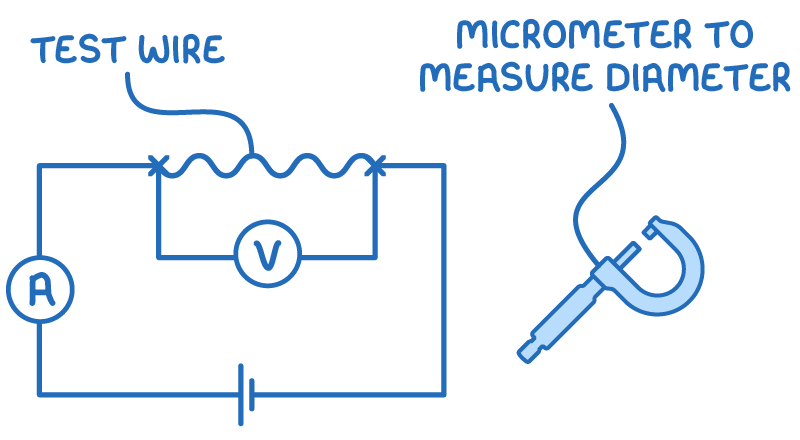Resistivity
This lesson covers:
- The role of length, area, and resistivity in determining resistance
- What resistivity means and its units
- Common resistivity values for conductors
- The concept of Ohm's law in the context of ohmic conductors
- How to calculate the resistivity of a wire by measuring its resistance
Understanding Ohm's law and ohmic conductors
Ohmic conductors, at a steady temperature, obey Ohm's law.
The potential difference across a component is directly proportional to the current flowing through it and the resistance of the component.
V=IR
Where:
- V = Voltage (V)
- I = Current (A)
- R = resistance (Ω)
Key points:
- Doubling the voltage results in a doubled current.
- The resistance remains constant under these conditions.
- This law does not apply to non-ohmic materials at varying temperatures.

Three key factors influencing resistance
The resistance (R) of a conductor is influenced by:
- Length (L) - The longer the wire, the greater its resistance.
- Area (A) - Wires with a larger cross-sectional area have reduced resistance.
- Resistivity (ρ) - This is a property unique to the material, which varies with temperature.
Resistivity is defined as the resistance encountered in a material that is 1 metre long and has a cross-sectional area of 1 square metre. Its units are ohm-metres (Ωm).
The formula linking these factors is:
R=AρL
Where:
R = resistance (Ω)
ρ = resistivity (Ω m)
L = length (m)
A = area (m2)
Worked example - Calculating the resistance of a copper wire
We will calculate the resistance of a copper wire that is 2 metres long and 1 mm in diameter.
The resistivity of copper is 1.72 x 10-8 Ω m.
Step 1: Calculate the Cross-sectional Area (A)
A=π×r2
A=π×0.00052=7.85×10−7 m2
Step 2: Formula
R = Aρ l
Step 3: Substitution and correct evaluation
R=7.85×10−71.72×10−8×2=0.044 Ω
Determining the resistivity of a wire experimentally

To find out the resistivity of a wire:
- Measure the diameter of the wire using a micrometer and calculate its cross-sectional area: A=4πd2 .
- Set up a circuit with the wire, power supply, ammeter and voltmeter
- Record the voltage and current readings.
- Vary the length of the wire and record the new voltage and current readings.
- Calculate the resistance for each length using: R=IV
- Create a graph plotting length against resistance.
- The gradient of this graph equals Aρ
- Multiply the gradient by A to obtain the wire's resistivity.